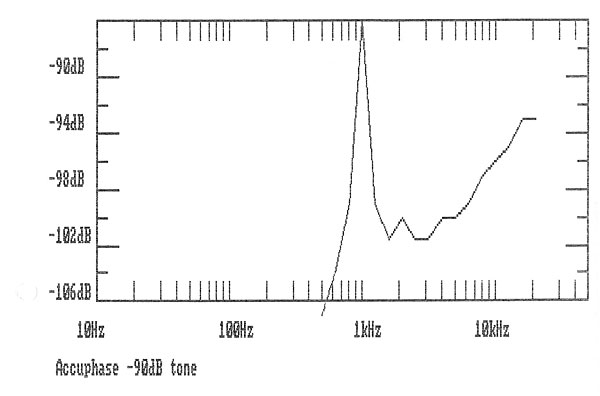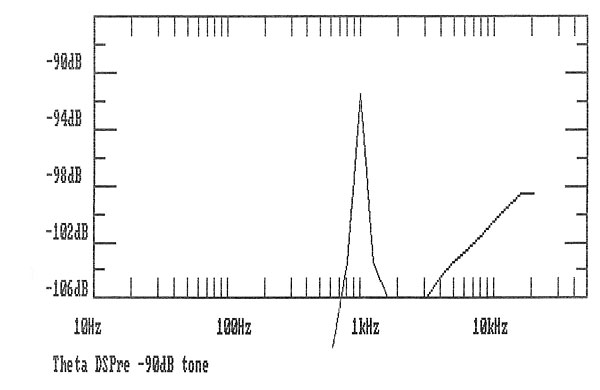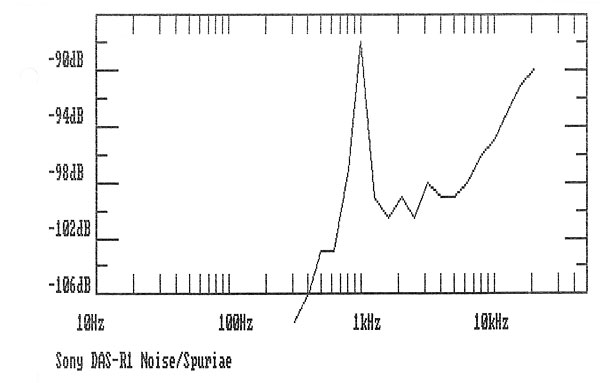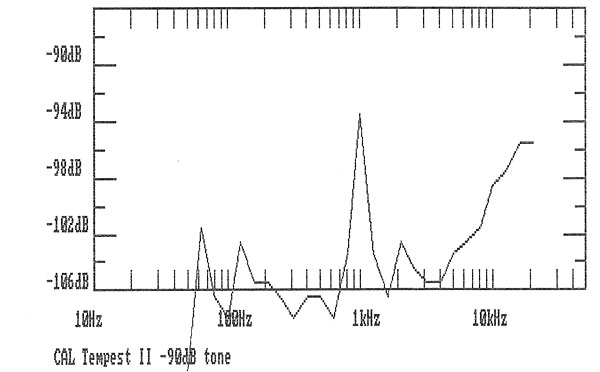| Columns Retired Columns & Blogs |
If someone has moved over to computer audio and has an Accuphase they want to offload I am willing to help out. Great gear! Love em! Always have, always will!
The output impedance of the Accuphase DC-81L's unbalanced outputs was right on spec at 50 ohms, as was the maximum output level at 2.5V. Looking at the frequency response gave a lower limit of –0.7dB at 4Hz and an upper limit of –0.25dB at 20kHz, with no discernible ripples in the top octave. Unusually, and irritatingly, investigating the output polarity with a raised-cosine pulse track revealed that the decoder output was inverting, something that should be taken into consideration when comparing the Accuphase with other machines in a dealer's listening room.
Fig.1 shows the 1/3-octave analyzed spectrum when the left channel of the Accuphase was reproducing the dithered –90.31dB tone on the CBS CD-1 test CD. Theoretically, a tone at –90.31dB is only described by three quantizing levels, thus should reproduce as a stepped squarewave. The use of dither when recording this computer-generated tone, however, means that it should actually be reproduced as a pure sinewave, overlaid with the dither noise. Any spuriae and noise apart from that already present on the disc, therefore, will be due to the player, not to the digital process. As can be seen from fig.1, the –90.31dB tone reproduces a little too high in level, at –86dB. (The right channel was slightly better at –87dB, but neither is as good as should be mandatory at this price level.) The 1kHz band, however, is some 14dB above the 2kHz band, implying a level of second-harmonic distortion of around 20%, which is one of the best I have yet measured, being equaled only by the Theta DS Pre, Yamaha CDX-1110U, and one channel of the Onkyo DX-G10 (footnote 1).

The Accuphase can also be seen to introduce fourth-harmonic distortion at around the same level as second-, but any harmonics above that are submerged in the intrinsic rising level of noise and higher-order rubbish. This is lower in level relative to the 1kHz tone than with some other machines, however, also being similar to the Theta, Yamaha, Adcom GCD-575, and Onkyo in this respect.
Figs.2, 3, and 4 show the 1/3-octave noise and distortion spectra for the three machines that I compared sonically with the Accuphase, the Theta DS Pre, Sony DAS-R1, and CAL Tempest II, respectively. The Theta again shows a very clean 1kHz sinewave at –90dB, with just 1.2dB of expansion evident; the Sony has some third-, as well as second-harmonic distortion present on the tone, with 2dB of compression evident at –90dB; while the CAL has predominantly second-harmonic apparent, some 9dB below the level of the fundamental. The CAL shows the most low-level expansion of any of the four, the –90.31dB tone reproducing 3.2dB too low in level and the –80.77dB tone 0.3dB too low, this typical of one of the better-quality Philips 16-bit chip sets. Note that the CAL also shows some supply-related noise, the 63Hz band lying at –101.5dB and the 125Hz band at –102.5dB. (Both are well below audibility, however, footnote 2).—John Atkinson



Footnote 2: The 60Hz level is very strongly affected by the positioning of the CAL's power supply. The measurements for fig.5 were taken with the player proper separated some 6" above its power supply. When the player is positioned directly on top of the power supply, as would seem intuitively correct, the 60Hz level rises by almost 20dB to –83dB, presumably due to the injection of hum from the transformer into the tube circuitry. It is essential, therefore, to arrange for the Tempest's two boxes to be physically separated to get the maximum sonic performance from it.